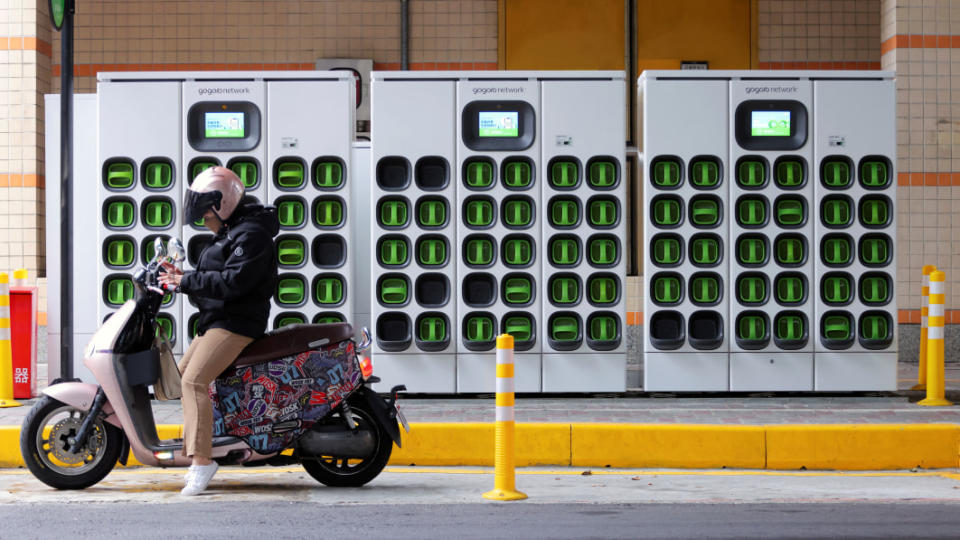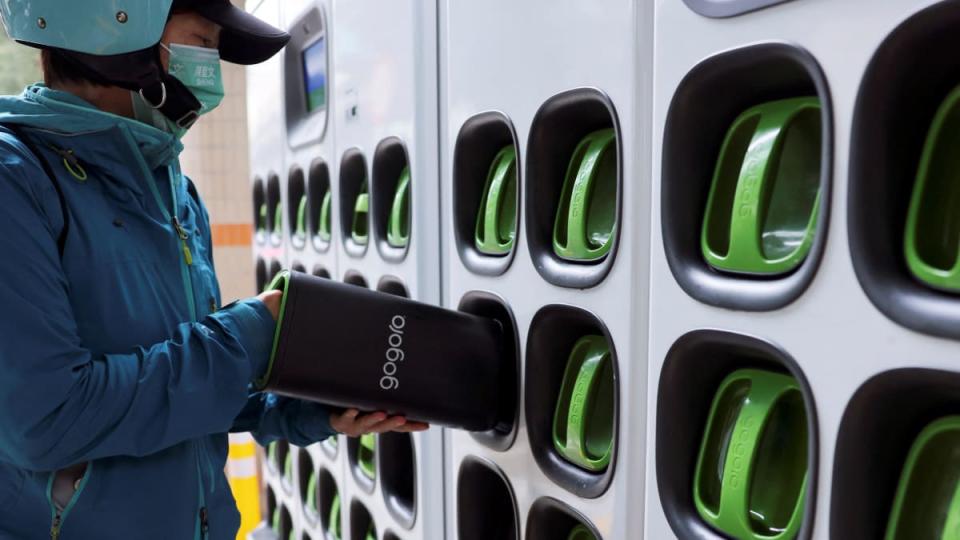One-minute battery swaps are spurring EV adoption in Asia

Hsiao Ding Hong fell in love with his electric moped right away. The battery-powered two-wheeler doesn’t make noise, vibrate or emit any exhaust. It has a sleek gray-blue exterior, can be controlled via smartphone app and even sings for Hsiao on his birthday. Best of all, it takes just one minute to get a full charge.
That’s because Gogoro Inc., the Taipei-based company that sold Hsiao his moped, lets him swap out its two batteries as often as he likes for up to 630 kilometers (392 miles) of driving each month, all for a subscription fee of 849 new Taiwan dollars ($27.80). Every weekday, as the 26-year-old university administrator rides to work in Taiwan’s Hualien city, Hsiao’s app identifies the nearest swapping station with charged batteries in stock. Once there, he pulls out his moped’s depleted batteries and inserts them into a vending-machine-like device, which then distributes fresh ones. Within 60 seconds, he’s on the road again with 40 miles of new range.
“Had battery swapping not been an option, I wouldn’t have purchased an electric scooter,” says Hsiao, who drove a gasoline-powered model until 2021. “The battery swapping service is really appealing because it saves a lot of time.”
Hsiao is one of many in Asia who are starting to embrace electric mobility with the help of batteries that can be changed out on the fly. While battery-swapping is complicated to implement in electric cars — part of why it has failed to catch on in the West — companies like Gogoro are proving that mopeds, rickshaws and other two- and three-wheelers are well suited to quick-and-easy battery switches, which can both alleviate range anxiety and spur wider EV adoption.
The boost can’t come soon enough, either. In India, for example, nearly 80% of vehicles sold are two-wheelers, and motorcycles and rickshaws account for roughly one third of fuel consumed on the road, according to clean energy research group BloombergNEF.
“Electrifying two-wheelers and rickshaws can help increase emissions mitigation in this decade before electric vehicle adoption takes off in other segments,” says BloombergNEF analyst Allen Tom Abraham. In 2020, just 2% of two-wheelers in Southeast Asia were electric. BloombergNEF expects that figure to reach 20% by 2030, thanks in part to battery-swapping.

Why swapping is surging
Today, Gogoro says it has more than 500,000 active monthly users and over 260 swaps on its network every minute, plus pilot programs in Indonesia, the Philippines and India. Also in India, Hyderabad-based RACEnergy sells retrofitting kits to convert gasoline rickshaws into electric models with batteries that can be swapped at its stations. In Singapore, MO Batteries offers a local swapping pilot program and has plans to enter Malaysia; the company is also testing battery swapping with logistics heavyweight DHL in Vietnam. Swapping’s potential has even lured multinationals to the fold: Honda Motor recently installed its first swapping station for moped drivers in Tokyo.

 Yahoo Autos
Yahoo Autos 
